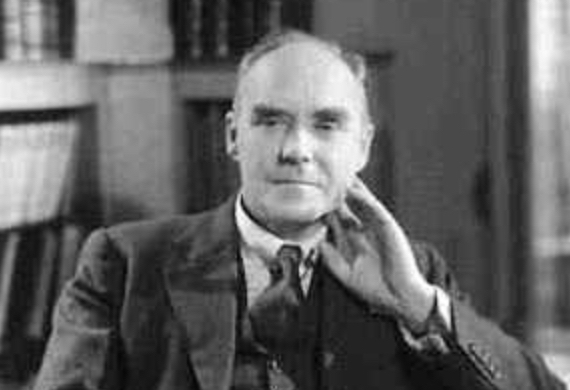OTD in early British television: 22 December 1936

John Wyver writes: the afternoon of Tuesday 22 December 1936 saw a 14-minute lecture by Yarrow Research Professor to the Royal Society G.I. Taylor (above) about the stabilisation of ships and why they roll in a rough sea. This was the first televised Royal Institution lecture for children, a television tradition that continues this year with three lectures by Chris van Tulleken on BBC Four and Youtube.
For many years now the lectures have been made as broadcasts from the Royal Institution, but in 1936 Geoffrey Taylor had to take what Radio Times described as ‘actual experiments’ to Studio A at Alexandra Palace. The Royal Institution website claims the broadcast as ‘most likely… the first science show seen on television’, but I am minded to give this crown to John Hilton’s talk, The Declining Population (9 November 1936), ‘illustrated by means of charts and diagrams’, on the falling English and European birth-rate. There was also the visit to AP by six penguins in the first Friends from the Zoo broadcast four days before the the Royal Institution lecture.
Apparently inspired to become a scientist by a much earlier series Royal Institution Christmas lectures, meteorologist and mathematician Sir Geoffrey Ingram Taylor, OM (1886-1975) had the most remarkable career, culminating in work during World War Two on military problems such as the propagation of blast waves, He was also part of the British delegation to the Manhattan project during 1944-45, where he worked on ways to calculate the energy yield of the first atomic bomb test. There are short online biographies from Trinity College Chapel and Wkipedia,
Leave a Reply